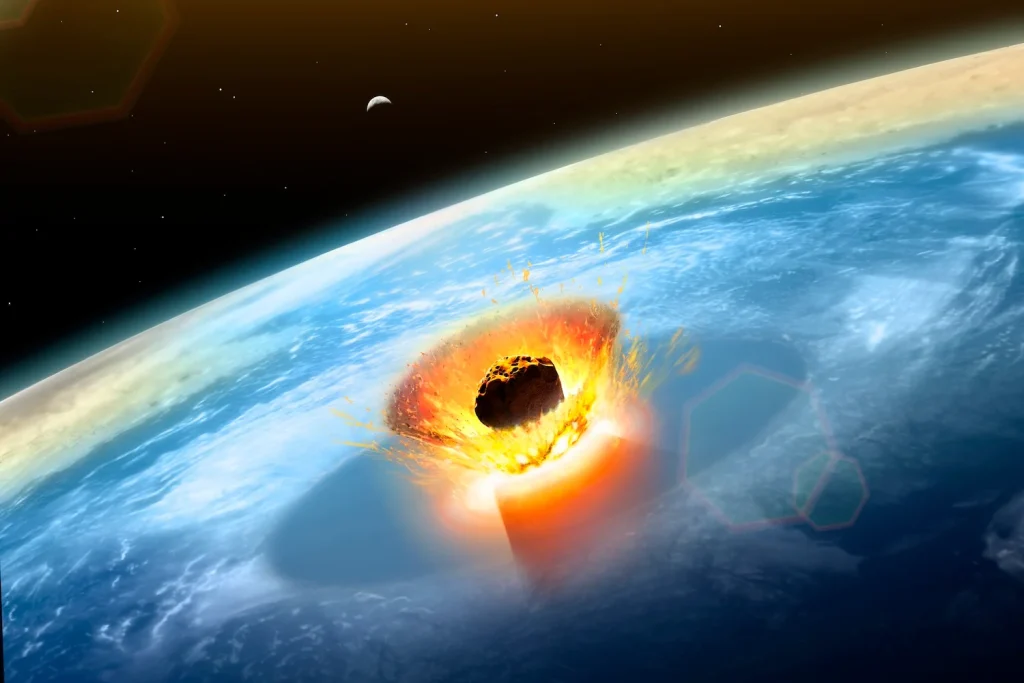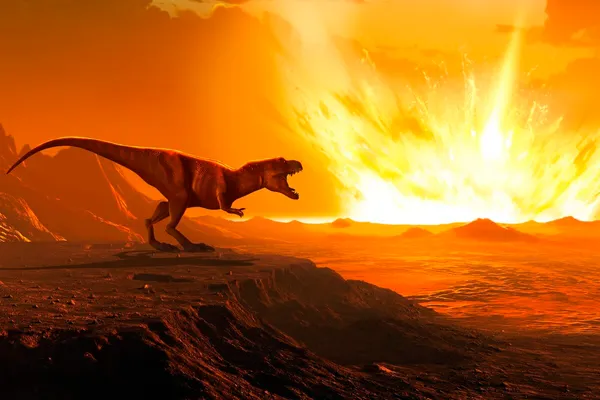About 66 million years ago, a colossal rock measuring over six miles in diameter collided with Earth, precipitating the mass extinction of non-avian dinosaurs and leaving behind a massive impact crater off the coast of what is now Mexico. This crater, known as Chicxulub, remains a key site for studying the event that reshaped Earth’s history. Despite extensive research, the origins and composition of the space rock responsible for this catastrophe have remained elusive.
To unravel the mysteries of the Chicxulub impactor, researchers embarked on an extensive analysis of samples from the crater. These samples were compared with those from other impact craters formed between 36 million and 470 million years ago. This comparative study revealed traces of a rare element called ruthenium, which aligns with the composition typically found in carbonaceous asteroids from the asteroid belt, located between Mars and Jupiter. However, a recent study published in Science suggests that the Chicxulub impactor may have originated from much farther out in the solar system.
According to the study, around 4.5 billion years ago, Jupiter’s dynamic movements likely disturbed the asteroid belt and caused some asteroids to migrate inward. The impactor that struck Earth could have been one such asteroid that journeyed from the outer regions of the solar system, eventually meeting its fate on our planet.
“This was a cosmic coincidence 66 million years ago,” stated Mario Fischer-Gödde, a scientist at the Institute of Geology and Mineralogy at the University of Cologne in Germany and the study’s lead author. “We don’t know exactly what triggered it, but it is very likely that it came from the asteroid belt.”
The study posits that the asteroid may have originally formed in the outer solar system and then migrated inward due to disturbances caused by the movement of the outer planets. Jupiter, before settling into its current orbit as the fifth planet from the Sun, was highly mobile, traveling toward the center of the solar system and then retreating. At one point, it came close to Mars. Jupiter’s migration likely ceased when the gravitational influence of Saturn began to exert a significant pull. This dynamic movement of Jupiter had a profound effect on the solar system, redirecting some distant asteroids toward the inner solar system.

Though it was known that the Chicxulub impactor originated within our solar system, its precise origin remained uncertain until now. Fischer-Gödde, believing that ruthenium could provide crucial insights, developed a novel technique to analyze the chemical bonds within rock samples to detect this rare element.
Ruthenium is an extremely rare metal, initially formed in ancient stars before becoming part of planetary building blocks throughout the universe. The element was buried deep within Earth long before the impact that killed the dinosaurs. Its presence in Chicxulub crater samples supports the theory that the asteroid came from the outer solar system, as it helps eliminate other possible origins for the meteorite.
Asteroids from the inner solar system typically contain fewer ruthenium isotopes. This is likely because temperatures in the inner regions were much higher during the early formation of the solar system. Consequently, inner solar system asteroids are composed primarily of metals and silicates, with less water and volatile compounds. In contrast, asteroids from the outer solar system tend to be richer in volatile elements like carbon, hydrogen, and nitrogen.
The researchers note that such large asteroid impacts are now less common due to the current, more stable conditions of the solar system. “The good news is, not many bodies are straying around wildly in our solar system,” Fischer-Gödde explained. “Everything is in a stable configuration; there would have to be a significant disturbance, such as a collision, to produce an Earth-crossing asteroid.”
Looking ahead, Fischer-Gödde is planning to turn his attention to the Moon. He aims to analyze lunar samples to better understand the nature of the craters on its surface and the materials behind them. “The Moon’s crust holds a record of impactors that hit both the Moon and Earth,” he noted. “To gain insights into the types of asteroids that impacted Earth during its early history, around 4 billion years ago, we need to examine the Moon.”
This new research not only sheds light on the origins of the Chicxulub impactor but also enhances our understanding of the solar system’s dynamics and the history of asteroid impacts on Earth.



 Viesearch - The Human-curated Search Engine
Blogarama - Blog Directory
Web Directory gma
Directory Master
http://tech.ellysdirectory.com
8e3055d3-6131-49a1-9717-82ccecc4bb7a
Viesearch - The Human-curated Search Engine
Blogarama - Blog Directory
Web Directory gma
Directory Master
http://tech.ellysdirectory.com
8e3055d3-6131-49a1-9717-82ccecc4bb7a